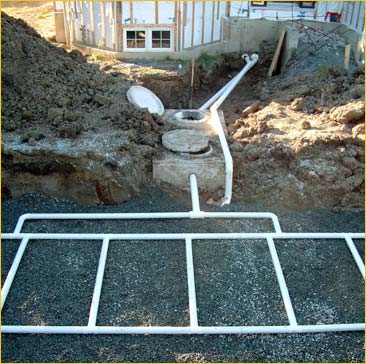Did you know? Your septic system is likely the most expensive appliance in your house!
Did you know? Your septic system flows into our streams and groundwater - it treats wastewater and keeps them clean!
Taking simple precautions today will both save you headache in the future and keep your system working so it will keep waste out of our waterways.
For Our Water
Improperly managed septic systems can release untreated, or partially treated, waste to nearby streams and rivers as well as groundwater. Untreated waste poses a human health risk to others and impairs water quality.
Streams throughout Howard County are impaired due to excess nutrients and fecal bacteria. While most of Howard County's Poor and Very Poor quality streams are in the heavily developed areas of Ellicott City, Elkridge, and Columbia, there are others in Western Howard County that are Very Poor, Poor, and Fair.
For Your Home
Improperly managed septic systems can lead to premature failure, including in-home sewage backups and stagnant drainfields. By taking care of your septic system today, you are decreasing your chances of needing an expensive repair in the future.
System repairs can be upwards of $50,000, depending on the work that needs to be done and whether or not there is a suitable location for a second drainfield. Preserving the usefulness of an existing drainfield extends its life.
How does a Septic System Work?
Septic systems are decentralized sewage-treatment systems that play an important role in keeping your home habitable and safeguarding local water quality.

1. You flush something down a drain. It arrives at the septic tank, where it sits and separates.
Septic systems operate with water in/water out - when you flush a gallon of water down the pipes, a gallon of water moves into the drainfield. If the volume in exceeds the volume out, the excess water will either back up into the drains in your home or may result in wastewater surfacing in your yard. Hydraulic overload is one of the most common ways to prematurely fail a septic system.

On left: Hydraulic Overload. Too much water all at once agitates the scum and sludge layers. This forces out organic material and solid waste, which can clog drainfields.
On right: A normally loaded tank. Scum floats to the top, sludge settles to the bottom, and liquid wastewater is free to leave the tank.
Precautions You Can Take:
- Fix dripping or leaking pipes to prevent unnecessary water from entering septic system.
- Replace old fixtures with water-saving versions.
- Space out water-intensive activities, like showers, loads of laundry, or dishwashing.
- Be wary of water softeners: water softeners flush large amounts of backwash into the septic tank. If you use a water softener, oversize your tank and drain field. [New regulations are on the horizon to allow diversion of water softener discharge away from the septic system.]
Inside the tank, toilet paper and waste breaks down. But many items labeled "flushable" are not, and will sit in the tank until physically removed. If too many build up, it can clog your tank.
Precautions You Can Take:
- Do not flush: diapers, baby wipes, paper products other than toilet paper, cat litter, cigaretts, coffee grounds, feminine products, kitchen scraps.
- Do not use a garbage dispoal: too much organic waste creats too many solids, which do not break down in the septic tank. If you have a garbage disposal, your tank will need to be pumped more frequently. Consider a compost heap instead.
- Stick to a regular maintenance schedule and pump out your tank. Pumping the tank removes solids that will not break down.
Inside the tank, there is naturally-occurring specialized bacteria that lives there that treats the waste. The septic system needs these living bacteria
Precautions You Can Take:
- Excessive household cleaners or excessive salt from a water softener can kill this bacteria.
- Do not flush: solvents, pesticides, herbicides, motor oil, antifreeze, or paint.
Remember: Everything that you flush will go into your yard eventually.
2. The wastewater leaves the tank and enters the drainfield.

Wastewater enters into perforated pipes that are set into the yard. Drainfields may vary depending on soil conditions - generally they are under grass and are set into gravelly pits. Here the wastewater is slowly leached out into the yard, where soil continues to treat and clean the wastewater.
Drainfields rely on a careful balance of soil drainage capacity.
Precautions You Can Take:
- Do not plant trees near the drainfield - their roots are problemmatic.
- Do not drive over or park on the drainfield (or septic system).
- The weight of your vehicle can collapse pipes and compact the soil, decreasing drainage.
- Pump your tank and prevent hydraulic overloading
- As a drainfield ages, if too many solids are pushed out into the field, or if the drainfield stays too wet, biomats will form around the perforated pipes.
- These biomats are patches of slime that will prevent the drainfield from properly absorbing wastewater as it is released from the septic tank.



